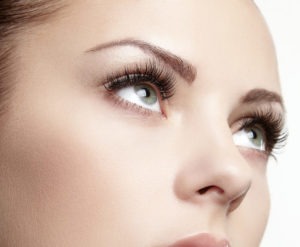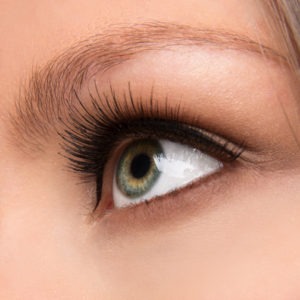 Are you tired of looking in the mirror and seeing droopy, tired-looking eyes staring back at you? If so, you are not alone. As we age, the skin around our eyes can start to sag and lose its elasticity, making us appear older and more fatigued than we actually feel. Fortunately, there is a solution that can help you achieve a more youthful and refreshed appearance – upper eyelid surgery. This popular cosmetic procedure is designed to rejuvenate the upper eyelids and restore a more alert and vibrant appearance. Say goodbye to droopy eyes and hello to a more confident and rejuvenated you with upper eyelid surgery. Khan Eyelid and Facial Aesthetics, led by oculoplastic and reconstructive surgeon Dr. Tanya Khan, provides upper eyelid surgery to patients in Plano, Dallas, Austin, Texas, and surrounding locations.
Are you tired of looking in the mirror and seeing droopy, tired-looking eyes staring back at you? If so, you are not alone. As we age, the skin around our eyes can start to sag and lose its elasticity, making us appear older and more fatigued than we actually feel. Fortunately, there is a solution that can help you achieve a more youthful and refreshed appearance – upper eyelid surgery. This popular cosmetic procedure is designed to rejuvenate the upper eyelids and restore a more alert and vibrant appearance. Say goodbye to droopy eyes and hello to a more confident and rejuvenated you with upper eyelid surgery. Khan Eyelid and Facial Aesthetics, led by oculoplastic and reconstructive surgeon Dr. Tanya Khan, provides upper eyelid surgery to patients in Plano, Dallas, Austin, Texas, and surrounding locations.
The Rejuvenating Power of Upper Eyelid Surgery
Are you tired of looking in the mirror and seeing droopy, tired-looking eyes staring back at you? If so, it’s time to discover the rejuvenating power of upper eyelid surgery. This transformative procedure can do wonders for your appearance and boost your confidence.
Upper eyelid surgery, also known as blepharoplasty, targets sagging skin and excess fat on the upper eyelids. By removing the extra tissue, the surgery opens up the eyes, giving them a more alert and youthful appearance. Not only will your eyes look brighter and more refreshed, but you’ll also notice a significant improvement in the overall balance and harmony of your facial features.
But the benefits go beyond just aesthetics. Upper eyelid surgery can also help improve your vision by removing the obstructing excess skin. You’ll experience clearer, unobstructed vision, making daily tasks and activities easier and more enjoyable.
If you’re tired of hiding behind tired-looking eyes, consider the rejuvenating power of upper eyelid surgery. Say goodbye to droopy eyes and hello to a more vibrant and confident you.
Benefits of Upper Eyelid Surgery
One of the biggest benefits of upper eyelid surgery is the dramatic improvement it can make to your appearance. Say goodbye to droopy, tired-looking eyes and hello to a more youthful and refreshed look. By removing excess skin and fat from the upper eyelids, this procedure can make your eyes appear brighter, more alert, and more vibrant.
But the benefits of upper eyelid surgery go beyond just aesthetics. Many patients also experience an improvement in their vision. The removal of excess skin can open up your field of vision and provide clearer, unobstructed sight. This can make everyday activities like reading, driving, and even watching TV more enjoyable.
In addition, upper eyelid surgery can have a positive impact on your self-confidence. When you look in the mirror and see a more rejuvenated appearance, it can boost your self-esteem and make you feel more comfortable and confident in your own skin.
Overall, the benefits of upper eyelid surgery are both cosmetic and functional, making it a great option for those looking to improve their appearance and enhance their quality of life.
What to Expect during and after an Upper Eyelid Surgery
During and after an upper eyelid surgery, there are certain things you can expect. First, it’s important to understand that this is a surgical procedure, so there will be some downtime and recovery involved. You may experience bruising, swelling, and discomfort around the surgical site, but these symptoms should subside within a few weeks.
During the procedure, local anesthesia will be administered to ensure your comfort. The surgeon will make an incision along the natural crease of your upper eyelid to remove excess skin and fat. The incision will then be closed with sutures.
After the surgery, it’s important to follow your surgeon’s post-operative instructions. This may include using ice packs to reduce swelling, taking prescribed pain medication, and avoiding strenuous activities. You will also have follow-up appointments to monitor your healing progress.
Remember, the full results of the surgery may take several months to appear, but once the swelling subsides, you’ll begin to see a more refreshed and youthful appearance.
Is Upper Eyelid Surgery Right for You? Factors to Consider
While upper eyelid surgery can provide remarkable results in rejuvenating the appearance of your eyes, it’s important to carefully consider whether this procedure is the right choice for you. Here are some factors to consider when deciding if upper eyelid surgery is the best option:
- Droopy or sagging eyelids: If you have excess skin or fat on your upper eyelids that is causing them to appear droopy or sagging, upper eyelid surgery can help restore a more youthful and refreshed look.
- Overall health: It’s essential to be in good overall health before undergoing any surgical procedure. Be sure to discuss your medical history and any underlying health conditions with your surgeon to ensure that you are a suitable candidate for upper eyelid surgery.
- Realistic expectations: While upper eyelid surgery can significantly improve the appearance of your eyes, it’s important to have realistic expectations. The surgery can enhance your natural features and provide a more youthful look, but it won’t completely change your appearance or make you look like someone else.
- Commitment to recovery: Upper eyelid surgery requires some downtime for recovery. You’ll need to follow your surgeon’s post-operative instructions, which may include rest, avoiding strenuous activities, and taking prescribed medication. It’s important to be prepared for this recovery period and commit to taking care of yourself during this time.
- Consultation with a qualified surgeon: To determine if upper eyelid surgery is right for you, it’s crucial to schedule a consultation with a board-certified plastic surgeon who specializes in facial rejuvenation procedures. They will evaluate your unique needs, discuss the potential risks and benefits, and help you make an informed decision.
Remember, every individual is different, and what works for one person may not be suitable for another. By considering these factors and discussing them with a qualified surgeon, you can determine if upper eyelid surgery is the right choice for you.
Contact Khan Eyelid and Facial Aesthetics and Oculoplastic & Reconstructive Surgeon Dr. Tanya Khan Today to Schedule an Appointment
For more information about procedures and treatments at Khan Eyelid and Facial Aesthetics by Ophthalmic surgeon Dr. Tanya Khan. Click here to contact us.
Taking patients from in and around Dallas, Plano, Fort Worth, Grapevine, Garland, Mesquite, Carrollton, Irving, Frisco, Texas and more.










Schedule a Consultation: 972-EYE-LIDS (393-5437)